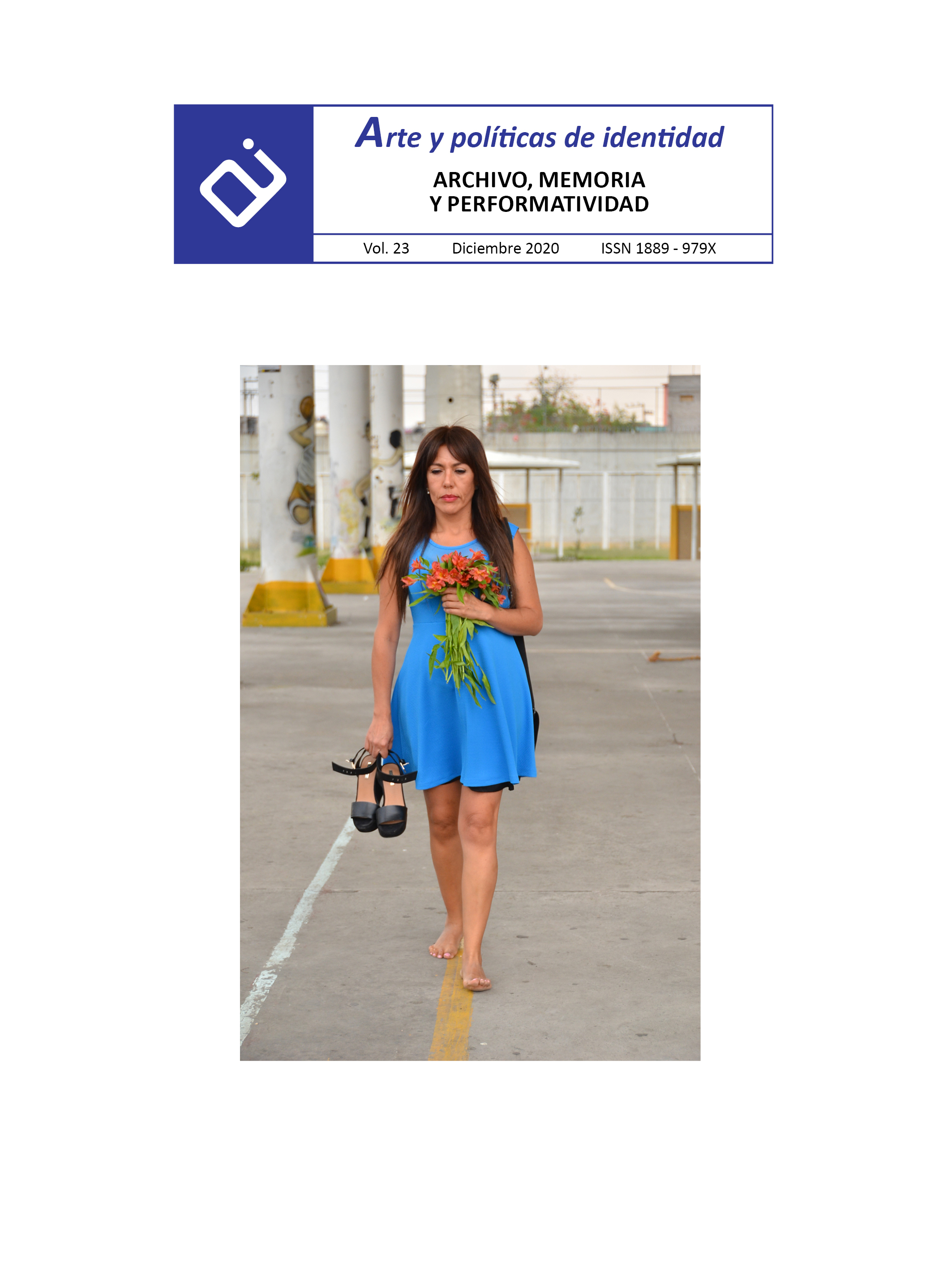Between reiteration and performance production. Two models of cultural production for a new performance turn
Abstract
This article analyses new models of cultural production rooted in the adaptation of live arts within museum contexts. Focusing on the study of the great retrospective exhibitions of Marina Abramović and Tino Sehgal, we try to identify the development of performative reiteration strategies, exposure mechanisms of these immaterial archives, as well as new productive models such as the production of co-presence and the production of intersubjectivity. If in the second half of the 20th century, performance emerged as a subversive tool through which to question the market and cultural institutions, the absorption and transformation of performances into a new product of cultural consumption generates a series of contradictions affecting its essence, especially since this second performance wave —named as a new performative turn— is driven by the same museums and cultural institutions that performance artist once tried to question. The exhibition containers have become meeting points between artists and an audience eager for direct experiences, where creators from other disciplines nurture and expand the galleries boundaries, replacing artefacts for living bodies.
Downloads
-
Abstract565
-
PDF (Español (España))399
References
Albarrán, J. (2017). Sehgal no invita a la lógica. Performance, experiencia y economía inmaterial en Tino Sehgal. Sin Objeto, 00, 24-39.
Bishop, C. (2016 [2012]). Infiernos artificiales: Arte participativo y política de la espectaduría. Ciudad de México: Taller de Ediciones Económicas.
Collins, L. (2012) The Question Artist. Tino Sehgal’s provocative encounters. Edición digital de The New Yorker del 6-8-2012. Recuperado de: https://www.newyorker.com/magazine/2012/08/06/the-question-artist
Costinaș C. y Janevski. A. (2018). Is the Living Body the Last Thing Left Alive? The New Performance Turn, Its Histories and Its Institutions. Hong Kong: Para Site and Sternberg Press.
Derrida, J. (1997). Mal de Archivo. Una impresión freudiana. Madrid: Trotta.
Fischer-Lichte, E. (2008). The transformative power of performance: A new aesthetics. Londres y Nueva York: Routledge.
Gallese, V. (2016) Bodily Framing. En U. J. Mather U., J. (ed.) Experience. Culture Cognition and the Common Sense. Cambridge y Londres: MIT Press.
Gumbrecht, H. U. (2004). Production of Presence. What meaning can not convey. Stanford, CA: Standford University Press, 2004.
Hantelmann, D. von. (2010). How to Do Things with Art. Zurich: JRP Ringier.
Jones, A. (2011). The Artist Is Present: Artistic Re-Enactments and the Impossibility of Presence. TDR. 55(1), 16-45.
Jones, A. (2012). The Now and the Has Been: Paradoxes of Live Art in History. En A. Jones y A. Heathfield (eds.). Perform, Repeat, Record: Live Art History. Bristol: LADA Life Art Development Agency.
Kaprow, A. (1965). Assemblages, Environments & Happenings. Nueva York: Harry N. Abrams.
Lepecky, A. (2012). Not as Before, But Simply: Again. En A. Jones y A. Heathfield. (eds.). Perform, Repeat, Record: Live Art History. Bristol: LADA Life Art Development Agency.
Lepecky, A. (2016). Loving Dancing. Nueva York: MoMA. Recuperado de: https://www.moma.org/d/pdfs/W5ma19KZXJvbWVCZWxfRXNzYXlfRmluYWxfMV81LnBkZiJdXQ/JeromeBel_Essay_Final_1_5.pdf?sha=2a7c4e7669083599
Lütticken, S. (2006). Secret Publicity: Essays on Contemporary Art. Róterdam: NAi Publishers.
Maar, K. (2015). What the body can do: Reconsidering the role of the moving body in exhibition contexts. Stedelijk Studies. Issue #3. Fall 2015. Recuperado de https://stedelijkstudies.com/journal/what-a-body-can-do/
Melgares, M.A. (2018). Retóricas del tiempo, performance y algunas estrategias para la capitalización de lo efímero. SOBRE. Prácticas artísticas y políticas de edición, 4, 7-17.
Morgan, R. C. (2010). Thoughts on the Re-Performance, Experience, and Archivism. PAJ: A Journal of Performance and Art, 96, 1-15.
O’Sullivan, S. (2006). Academy: ‘The Production of Subjectivity’. En: ROGOFF, Irit (ed.). Academy. Frankfurt/Main: Revolver. Recuperado de https://www.simonosullivan.net/art-writings/production-of-subjectivities.pdf
Phelan, P. (1996). Unmarked. The Politics of Performance. Londres: Routledge.
Reckitt, H. (2011). To Make Time Appear. Art Journal, 70(3), 58-63.
Schechner, R. (2013). Performance Studies. An introduction. Londres: Routledge.
Schimmel, P. (ed.) (1998). Out of Actions: between performance and the object, 1949–1979. Londres y Nueva York: Thames and Hudson, Los Ángeles: MoCA.
Sehgal, T. y Cattelan, M. (2009). Tino Sehgal interviewed with Maurizio Cattelan, Tino Sehgal: Economics of Progress. Flash Art, 264, 90.
Sehgal, T. y Obrist, H. U. (2003). Hans Ulrich Obrist: Interview mit Tino Sehgal in: Katalog des Kunstpreises der Böttcherstaße. Bremen: Kunsthalle. Recuperado de http://www.johnengalerie.de/fileadmin/Download/Press/sehgal/Sehgal_Interview_mit_Obrist_2003.pdf
Spångberg, M. (2012). New kinds of art. Recuperado de https://spangbergianism.wordpress.com/2012/09/21/new-kinds-ofart/#comments
Steyerl, H. (2017). Duty Free Art. Art in the Age of Planetary Civil War. Londres y Nueva York: Verso.
Works published in this journal are subject to the following terms:
- The Service of Publications from the University of Murcia (publishing house) keeps the published works’ copyrights, and favors and allows the reuse of these works under the license indicated in point 2.
- Works are published in the journal’s online edition under the license Creative Commons Reconocimiento-NoComercial-SinObraDerivada 3.0 España(texto legal). They can be copied, used, disseminated, transmitted and publicly exhibited, as long as: i) the author and original source of publication are cited (journal, publishing house and work’s URL); ii) they are not used for commercial purposes; iii) the existence and specifications of this license are mentioned.
3. Conditions for auto-file. It is allowed and encouraged that authors share electronically their pre-print version (the pre-reviewed version) and /or post-print version (the reviewed and accepted version) of their Works before the publication, since it promotes its circulation and dissemination. RoMEO color: green.










